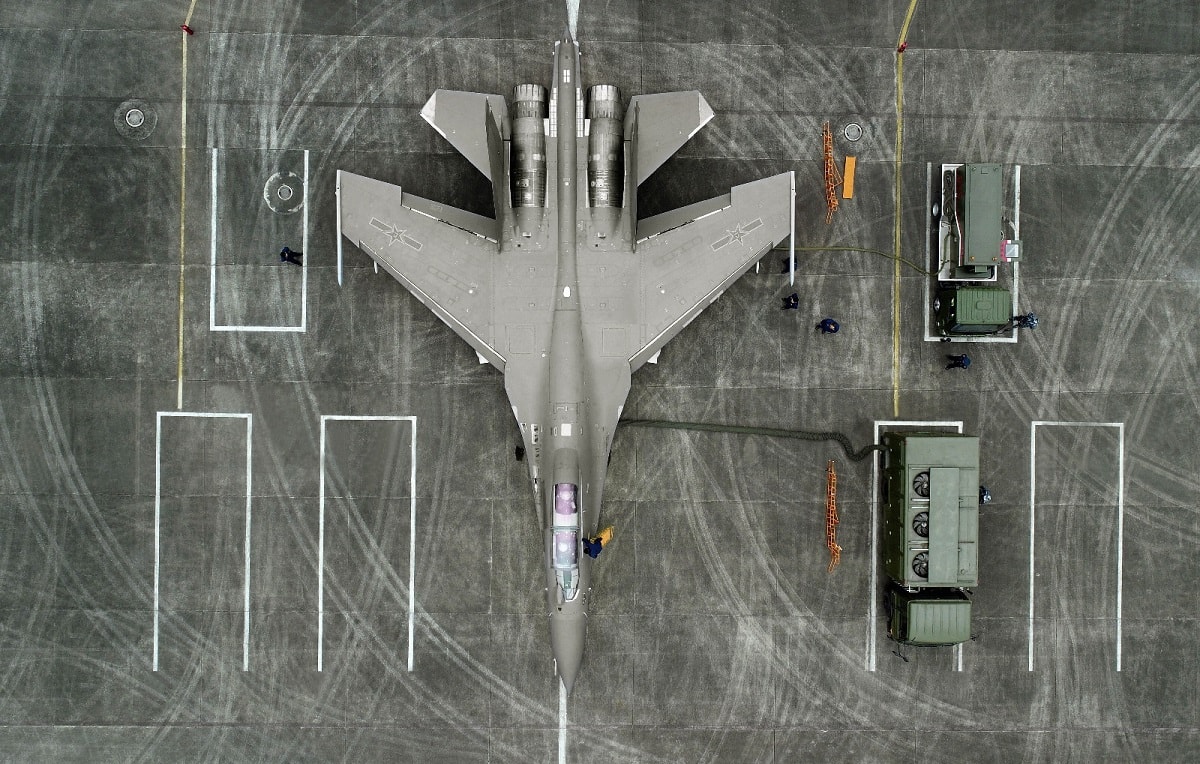Speaking at the Shangri-La Dialogue in Singapore on Sunday, Chinese Defence Minister Li Shangfu said that a conflict with the United States would be an “unbearable disaster” and maintained that his nation seeks dialog over confrontation. At the Asian security summit, Li said the world is large enough for China and the United States to grow together.
Yet, the actions of some in the People’s Liberation Army had suggested otherwise, while Li had also refused to meet with his U.S. counterparts for direct talks.
It was on Saturday that a Chinese warship came within 150 yards of the U.S. Navy destroyer USS Chung-Hoon (DDG 93) during a joint Canadian-U.S. exercise in the Taiwan Strait.
The course of action by the People’s Liberation Army Navy (PLAN) vessel was just the latest in a series of increasingly aggressive moves by Beijing in the South China Sea.
Last month, a Chinese fighter jet flew directly in front of the nose of a U.S. reconnaissance plane over the South China Sea. The “unnecessarily aggressive maneuver” by the Chinese J-16 reportedly forced the U.S. RC-135 to fly through the fighter jet’s wake turbulence.
The Pentagon has released a video of the encounter.
Another J-16 fighter made an equally aggressive move near an Australian P-8A Poseidon reconnaissance aircraft last June.
Saturday also marked the 34th anniversary of the 1989 Tiananmen Square crackdown.
Not Exactly Routine Anymore
The United States Navy had confirmed that the U.S. and Canadian warships were making a routine transit of the Taiwan Strait when the close encounter with the Chinese vessel occurred.
“In accordance with international law, USS Chung-Hoon (DDG 93) and HMCS Montreal (FFH 336) conducted a routine south to north Taiwan Strait transit June 3 through waters where high seas freedoms of navigation and overflight apply. During the transit, PLA(N) LUYANG III DDG 132 (PRC LY 132) executed maneuvers in an unsafe manner in the vicinity of Chung-Hoon,” the U.S. Indo-Pacific Command (USINDOPACOM) said in a statement.
“The PRC LY 132 overtook Chung-Hoon on their port side and crossed their bow at 150 yards. Chung-Hoon maintained course and slowed to 10 kts to avoid a collision. The PRC LY 132 crossed Chung-Hoon’s bow a second time starboard to port at 2,000 yards and remained off Chung-Hoon’s port bow. The LY 132’s closest point of approach was 150 yards and its actions violated the maritime ‘Rules of the Road’ of safe passage in international waters,” USINDOPACOM added. “Chung-Hoon and Montreal’s transit through the Taiwan Strait demonstrates the combined U.S.-Canadian commitment to a free and open Indo-Pacific. The U.S. military flies, sails, and operates safely and responsibly anywhere international law allows.”
Instigated by the Chinese
The PLAN ship picked up speed and cut in front of the bow of the U.S. destroyer, a maneuver HMCS Montreal’s commander, Captain Paul Mountford, described as “not professional,” according to Global News.
Mountford said that believed the incident was “clearly instigated by the Chinese,” but also added that he hopes it won’t be repeated.
“The fact this was announced over the radio prior to doing it, clearly indicated this was intentional,” Mountford explained. “I am hoping that is an isolated incident that won’t happen again for us, because we have international law on our side. This is international waters.”
The Chinese warship had been shadowing the joint U.S.-Canadian vessels throughout last week – and before either began the transit of the Taiwan Strait. Ottawa has made it clear that this weekend’s incident will not deter the Canadian military.
“Canada will continue to sail where international law allows, including the Strait, the South China Sea,” said Canadian Defense Minister Anita Anand, who added, “Our overall goal is to increase the peace and stability of this region. And that’s why we are going to continue to see more of Canada in this region as set out in our Indo-Pacific strategy. We’ve already seen unsafe intercepts, and we have addressed those appropriately with China in terms of our RCAF pilots. Actors in this region must engage responsibly, and that’s the bottom line.”
Strong Responses
China’s Li, who was wearing the general’s uniform of the People’s Liberation Army (PLA), told attendees at the Asian summit, “China and the U.S. have different systems and are different in many other ways.”
His remarks were described as the first significant international address since he was named China’s Minister of National Defence in March.
“However, this should not keep the two sides from seeking common ground and common interests to grow bilateral ties and deepen cooperation,” Li added. “It is undeniable that a severe conflict or confrontation between China and the U.S. will be an unbearable disaster for the world.”
At the same forum, U.S. Secretary of Defense Lloyd Austin, a retired U.S. Army general and not in uniform, made clear that Washington would not “flinch in the face of bullying or coercion” from Beijing.
Since 2021, China has also declined or failed to respond to more than a dozen requests from the United States Department of Defense (DoD) for meetings or discussions between senior leaders. Yet, this weekend, Li maintained, “China is open to communications between our two countries and also between our two militaries.”
It should be noted that actions sometimes speak louder than words.
Author Experience and Expertise
A Senior Editor for 19FortyFive, Peter Suciu is a Michigan-based writer. He has contributed to more than four dozen magazines, newspapers, and websites with over 3,200 published pieces over a twenty-year career in journalism. He regularly writes about military hardware, firearms history, cybersecurity, politics, and international affairs. Peter is also a Contributing Writer for Forbes and Clearance Jobs. You can follow him on Twitter: @PeterSuciu.
From 19FortyFive
Ukraine Footage Shows U.S. M982 ‘Excalibur’ Cut Through Russian Artillery
How To Sink A $3 Billion Dollar Submarine: Leave A Hatch Open
Smashed To Pieces: Video Shows Ukraine Hitting Russian Air Defenses

